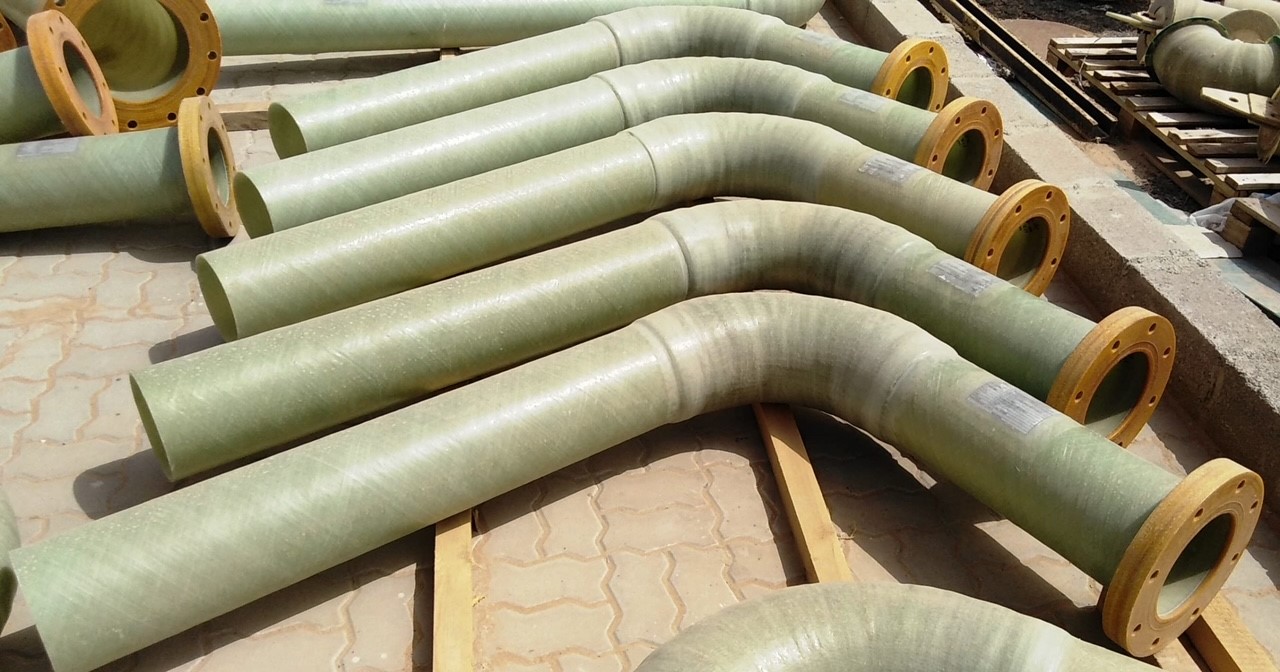Efficient GRP Pipework Replacement: Enhancing Durability and Performance in Industrial Systems
In industrial environments, the infrastructure that supports your systems is just as important as the machinery it serves. Over time, the reliability of pipework—particularly in aggressive or corrosive environments—can degrade, leading to costly downtime, safety hazards, and decreased operational efficiency. One increasingly popular solution is the replacement of traditional pipework materials with Glass Reinforced Plastic (GRP) pipework, which offers enhanced durability, resistance to corrosion, and long-term performance.
What is GRP Pipework?
GRP (Glass Reinforced Plastic), also known as Fiberglass Reinforced Plastic (FRP), is a composite material made from a polymer matrix reinforced with glass fibres. This combination provides a lightweight yet incredibly strong and durable solution, making it ideal for industrial applications. GRP pipework is frequently used in industries such as:
- Chemical processing
- Wastewater treatment
- Power generation
- Food and beverage production
- Marine environments
These environments often involve exposure to corrosive chemicals, extreme temperatures, and high-pressure systems, all of which can deteriorate traditional metal pipework. GRP's superior properties make it an excellent replacement option for improving both performance and longevity.
The Benefits of GRP Pipework Replacement
-
Corrosion Resistance
One of the most significant advantages of GRP pipework is its resistance to corrosion. Unlike metal pipes that rust and weaken over time, GRP remains unaffected by harsh chemicals, acids, and seawater. This makes it particularly well-suited for chemical plants, wastewater facilities, and any system that handles corrosive substances. The result? Reduced maintenance costs and longer-lasting infrastructure. -
Lightweight Yet Strong
GRP pipes are much lighter than their metal counterparts, which makes them easier and cheaper to transport and install. Despite being lightweight, GRP pipes offer impressive strength and durability, capable of withstanding high-pressure systems without cracking or breaking. This unique combination enhances the overall efficiency of installation and the long-term reliability of the pipework. -
Thermal and Electrical Insulation
GRP pipework offers excellent insulation properties. In industries where maintaining stable temperatures is critical, GRP pipes help reduce heat loss, maintaining efficiency across the system. Additionally, GRP is non-conductive, making it an ideal choice in environments where electrical insulation is required. -
Cost-Effective Over Time
While the initial installation cost of GRP pipework might be slightly higher than traditional materials like steel, the long-term cost savings are substantial. GRP’s extended lifespan, minimal maintenance requirements, and reduced risk of failure make it a more economical choice over the lifetime of your system. -
Customizable and Flexible Design
GRP pipes are highly adaptable, meaning they can be custom-manufactured to meet specific project requirements. Whether your system needs pipes of a particular diameter, thickness, or length, GRP can be designed to fit unique operational conditions, offering a level of flexibility not always available with traditional materials.
When is GRP Pipework Replacement Necessary?
Replacing outdated or underperforming pipework with GRP should be considered if your industrial systems are experiencing:
- Frequent corrosion-related failures or leaks
- High maintenance and repair costs
- Significant downtime due to pipework failures
- The need for higher temperature and pressure resistance
If your system operates in a corrosive or high-pressure environment, transitioning to GRP pipework is a proactive way to improve performance, reduce costs, and future-proof your infrastructure.
The Process of Efficient GRP Pipework Replacement
Replacing old pipework with GRP doesn’t need to be a disruptive process. In fact, an efficient GRP pipework replacement can be carried out in a phased manner to minimise downtime. Here’s what you can expect from a well-managed pipework replacement project:
-
Initial Assessment
The first step is conducting a thorough assessment of the existing pipework. This includes evaluating the current condition, identifying weak points, and determining the specifications for the replacement GRP pipework. Engineers will also assess environmental factors such as chemical exposure, temperature, and pressure requirements. -
Design and Manufacturing
Once the specifications are clear, the GRP pipework is custom-manufactured to meet the exact needs of the system. This flexibility allows for seamless integration into existing infrastructure, reducing installation complexity. -
Removal and Installation
Efficient planning is key to minimising downtime. Sections of the existing pipework can be replaced in stages, ensuring that the system continues to operate during the transition. GRP pipework is lightweight and easy to handle, allowing for quicker installation compared to traditional materials. -
Testing and Commissioning
After installation, the system is thoroughly tested to ensure optimal performance. Engineers will check for any leaks, confirm pressure and temperature resistance, and ensure that the GRP pipework is functioning as intended.
Long-Term Performance and Maintenance
One of the biggest advantages of GRP pipework is the minimal maintenance it requires. Unlike metal pipes, which need regular inspection and maintenance to prevent corrosion and other issues, GRP pipework can be left in place with little to no intervention. This significantly reduces operational costs over the long term, allowing businesses to focus on their core operations without the constant worry of pipework failures.
Conclusion: Why Choose GRP for Your Industrial System?
In industries where efficiency, durability, and performance are crucial, the choice of pipework material can have a significant impact on long-term success. GRP pipework replacement offers a cost-effective, reliable, and adaptable solution that enhances the performance of industrial systems while reducing maintenance costs and downtime.
If your business is operating in a high-stress, corrosive environment, investing in GRP pipework can future-proof your infrastructure and deliver long-term savings. At IME, we specialise in GRP pipework replacement and can help you assess, design, and install a system tailored to your specific needs. Get in touch today to learn more about how we can enhance your industrial system’s durability and performance with GRP. For specialist advice and a no-obligation quotation, call IME on 02085996570 or email sales@imegroup.co.uk.

